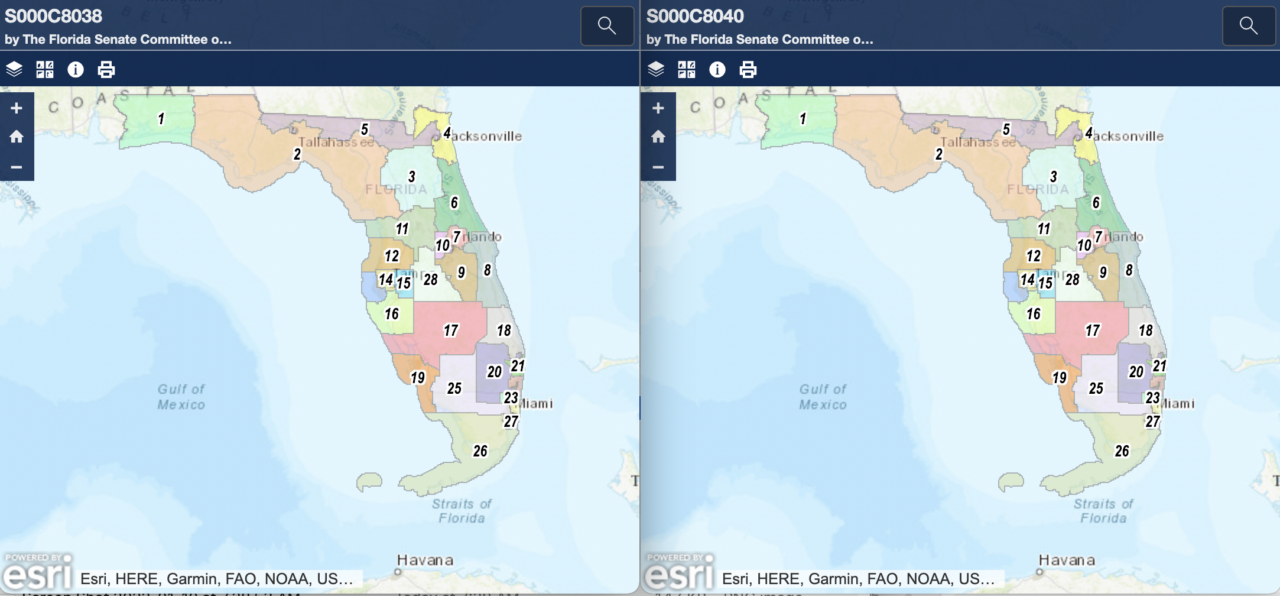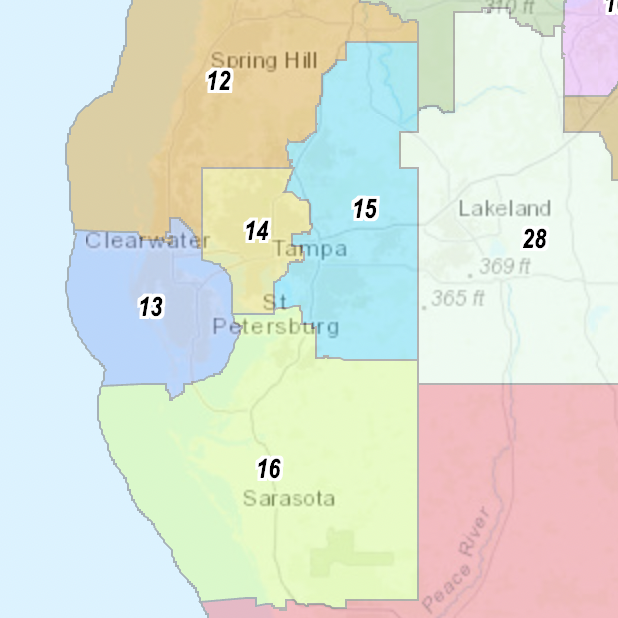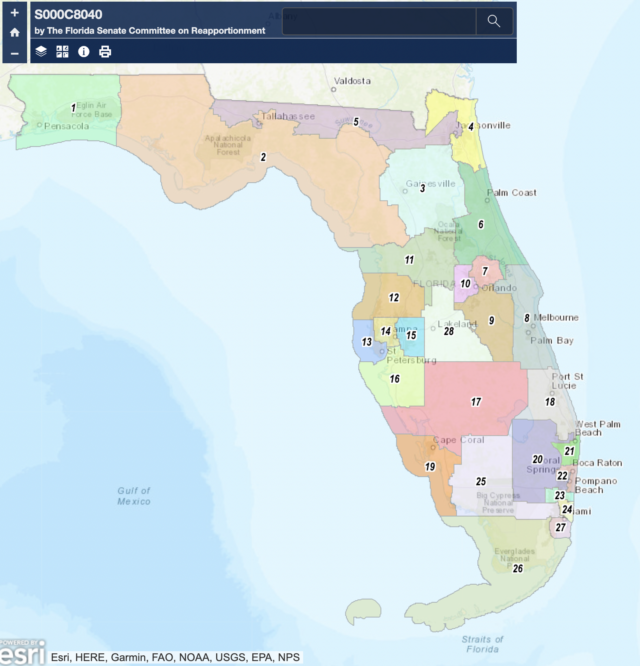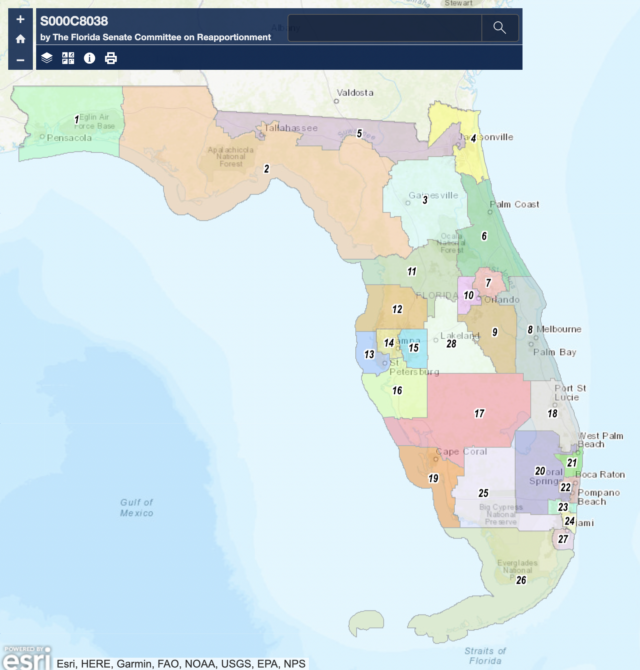
State senators scrapped plans to significantly reorient U.S. House districts represented by U.S. Reps. Lois Frankel and Ted Deutch. But a push to keep U.S. Rep. Kathy Castor’s district entirely in Hillsborough County seemed to falter Monday.
The Senate Congressional Reapportionment Subcommittee effectively narrowed down staff proposals for Florida’s now-28 U.S. House seats to two choices. Sen. Jennifer Bradley, the subcommittee chair, recommended two draft maps — S 8038 and S 8040 — for Sen. Ray Rodrigues to consider as he drafts a final bill.
Those plans “most consistently adhere to directions given to staff,” the Fleming Island Republican said.
The most significant impact of narrowing the plans is providing clarity regarding two South Florida jurisdictions, Florida’s 21st and 22nd Congressional Districts.
Two other plans reimagined the districts as narrow geographies spanning north and south, with CD 22 hugging the coastline from West Palm to Fort Lauderdale, with CD 21 left inland and stretching from Greenacres to Coral Springs. That could have made the districts more analogous to maps produced by the state Senate a decade ago but tossed and replaced by the Florida Supreme Court.
While there’s not a requirement for members of Congress to live in the district they represent, the change to vertical orientations brought with it political consequences. Frankel, the Democrat who represents CD 21 in its existing make-up, would no longer have represented West Palm Beach, a major city where she once served as Mayor, under the draft cartography rejected by the Subcommittee moving forward. Deutch, the Democrat representing CD 22, would have seen his hometown of Boca Raton in the same district as Frankel’s community. While an incumbent-on-incumbent primary appeared unlikely, the draft maps advanced by the Senate subcommittee leave West Palm Beach near the northern edge of CD 21 and Boca Raton firmly in CD 22.
But the Senate subcommittee did not resolve differing proposals for three Orlando area districts, Florida’s 7th, 9th and 10th Congressional Districts, though those differences are much smaller.
S 8038 used State Road 192 as a hard divide between CD 9 and CD 10. Meanwhile, S 8040 uses State Road 528 to the same effect, putting the area around the Orange County Convention Center in CD 10. In exchange, CD 9 under the second proposal would pick up area from Curry Ford Road north to State Road 50 that’s located in CD 7 under the first draft.
The choice of which way to go seems to have been left to the full Senate Reapportionment Committee, which Rodrigues chairs. Rodrigues himself can choose one of the maps to include in his draft bill before the committee meets on Thursday.
But a push from a Tampa Bay lawmaker to make sure no district spans both Hillsborough and Pinellas counties found little reception among peers. Sen. Darryl Rouson, a St. Petersburg Democrat, has raised concerns about staff proposals that consistently shift Florida’s 14th Congressional District across the county line.
He submitted his own draft (S 8052) that would have kept CD, represented now by Democratic U.S. Rep. Kathy Castor, entirely in Hillsborough. He said that district would keep all 24 Pinellas County municipalities whole, either in Florida’s 12th or 13th Congressional Districts.
Rouson said his map “comports with mathematical and visual compactness.”
Rouson has criticized staff proposals for splitting the major city of Tampa. His map keeps 88% of Tampa in CD 14.
But Bradley questioned the impact of Rouson’s plan on other jurisdictions, most notably Florida’s 15th Congressional District. Under the Rouson plan, CD 15 would become narrower than proposed in the staff maps, and reach from north of Dade City to the south around Sun City Center. In both staff maps, that district would be contained within Hillsborough County rather than reaching north across the Pasco County line.
As for political consequences, Rouson’s map was actually kinder to U.S. Rep. Gus Bilirakis, a Palm Harbor Republican representing the existing CD 12. The proposals advanced by the subcommittee actually place Palm Harbor in CD 13, though most of his turf remains in the proposed CD 12 and he would likely still seek reelection there.

Castor’s district carves further to the east and becomes a narrowly divided one by party, based on a partisan performance analysis by MCI Maps.
Notably, that shows the remaining drafts could allow Democrats to net a seat, if voters were to cast ballots consistent with how they voted in the 2020 Presidential Election. Based on that, Florida would end up with a Congressional Delegation with 16 Republicans and 12 Democrats, as opposed to the 11 Democrats representing the state in Congress today.
But there will certainly be battlegrounds.
U.S. Rep. Maria Elvia Salazar, a Miami Republican, ends up in a district Donald Trump won, though one the Republican took with just 49.8% of the vote. U.S. Rep. Carlos Gimenez, a Miami Republican, would also find himself in a siwng seat under the maps, but one Trump won with 52.8% in 2020.
Castor would be in Joe Biden country, but a district the Democrat took with only 51.7%.
Two Democrats not seeking reelection, U.S. Reps. Charlie Crist and Stephanie Murphy, will leave behind battlegrounds of varying volatility. Crist’s district would remain one of the most divided in Florida, a place Biden won with 50.2% of the vote. Murphy’s district appears a little safer, with Biden winning 53.2% of the vote there last year. But in a solid Republican year, as most anticipate 2022 will be, the district could swing to the Republican column.






2 comments
Alex
January 10, 2022 at 12:00 pm
I’m just waiting to find out how badly the Republicans screwed people out of their right to have their votes counted.
Matthew Lusk
January 10, 2022 at 12:40 pm
CD 5 has no valid reason to be so contorted other than race politics.
Comments are closed.